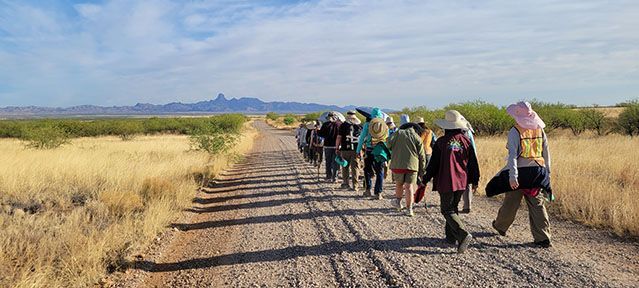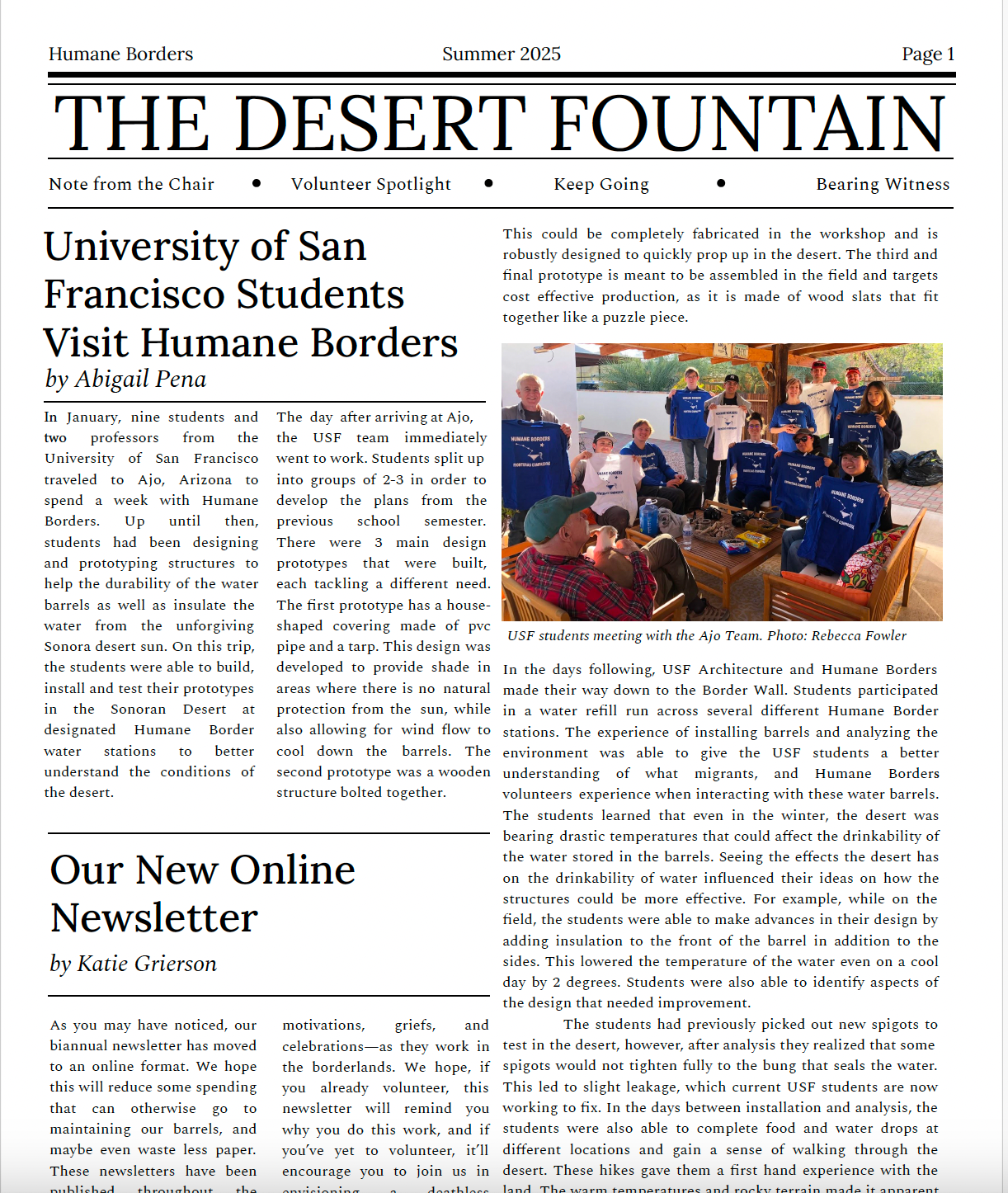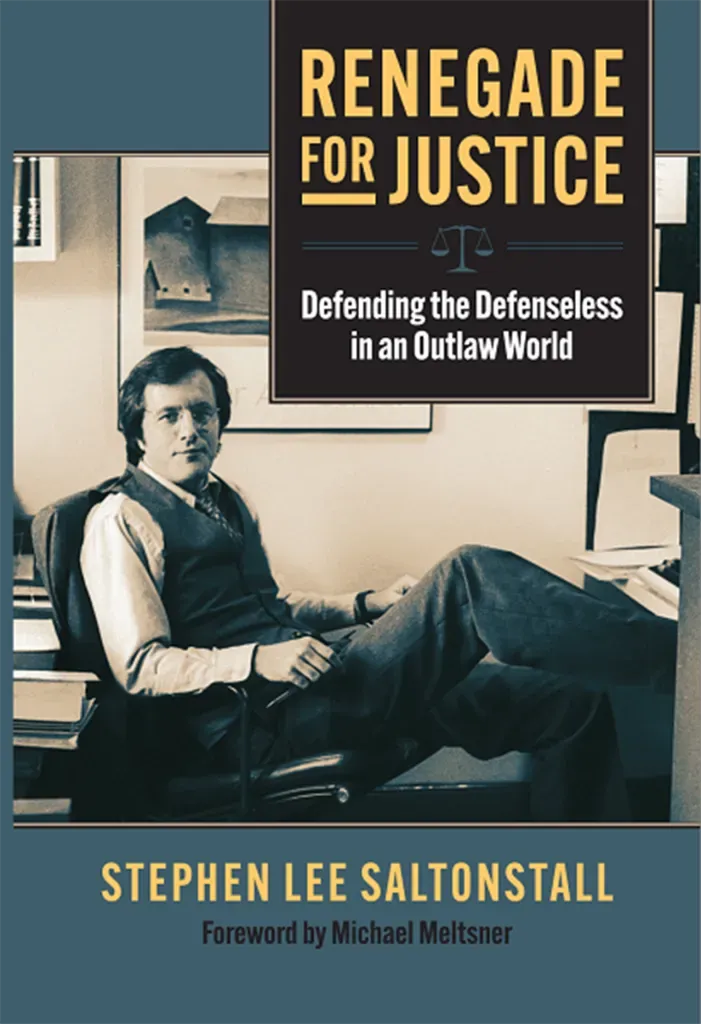Blue barrel diaries
a humane borders blog
When We Walk The Migrant Trail, We Remember
By Jamie Wilson

Tobacco, copal, and sage. These are some of the sacred medicines that Kat Rodriguez is mixing by hand as a small group gathers to prepare the ritual prayer ties for the annual Migrant Trail—a 75-mile walk from the U.S.-Mexico border at Sásabe, Sonora, to Tucson, Arizona, to bear witness to the preventable tragedy of migrant deaths. Red squares of cotton fabric have been cut and prepared to receive the generous pinches of fragrant tobacco. We also have a blue tie for the sky, green for the earth, and yellow for the sun. For many years, Maria Padilla, who is of Mayo and Mexican descent, has prepared the sacred ties for the walk. As we settle in for our task, the energy is mixed—the joyful camaraderie of our group is punctuated by the sobering knowledge that since we walked last year, the remains of 155 individuals have been recovered in the Arizona borderlands, and over the past two decades the Migrant Trail has carried thousands of prayer ties—one delicately wrapped pinch of medicine for each person whose remains were found in the Arizona borderlands.
In addition, there is a white prayer tie for the thousands who are still missing. Marco Hernandez was one of many missing migrants symbolized by a white prayer tie for over a decade, after he disappeared in 2008 while crossing the border into Arizona. His story is one of many that Kat Rodriguez has shared with me over the years. Kat, who has helped organize the Walk since 2004, worked for over a decade in Tucson documenting human rights abuses in the borderlands and helping to match recovered remains to the missing persons reports. She came to know Marco’s son during his long search for his father. In 2020, Marco’s remains were finally discovered and identified. It was Kat who ultimately delivered his ashes to his wife, bringing a measure of closure after years of uncertainty. Marco is just one of the many missing migrants whom Kat has helped to identify and return home, an experience she describes as utterly heartbreaking. As we prepare prayer ties, we think of people like Marco and his family; these are then carried at the front of the line.
On the first day, at the border wall, which divides the traditional O’Odham lands, the prayer ties are unfurled to receive a blessing, and are smudged with sage or cedar. Their long chain is another visual reminder of the border’s extensive damage. In fact, the Tohono O’Odham nation sits in the Sasabe Corridor, one of the deadliest corridors for border crossers, many of whom are Indigenous to the Americas. It is not uncommon for migrants and asylum seekers to speak an Indigenous language as their first language. There is a profound tragedy in the fact that so many Indigenous people are dying on O’Odham land, often within the sight of Mount Babouqivari, the spiritual home of the Tohono O’Odham People.
We also carry crosses with the names of people whose remains have been found in the Arizona borderlands. Many read “Desconocido/a” (“Unknown”), which is a misnomer because no human is unknown. Like Marco’s father, the crosses symbolize a person who is deeply missed. As we come into the water stops along the walk, we call out the names on our crosses, responding to each name with “presente” (present). This ritual is symbolic. It seeks to remember and recognize those who have died while crossing. For the “desconocidos/as”, it creates a time and a space for a person whose loved ones have been unable to perform the rituals of mourning when a body is present (for me, assuming their spirits are aware of these actions, it is one small way of asking for their forgiveness). For many years, the walk has begun at the Catholic church in Sásabe, Sonora—one of the small border towns where thousands of migrants, many from Central America and beyond, have likely rested before undertaking the final, treacherous leg of their journey.
While the Migrant Trail is not affiliated with any religion, it is deeply rooted in ritual and spirituality. We are a spiritually diverse group, but we recognize that many who cross the border come from Christian and Indigenous traditions. In Sásabe, we receive a blessing from the priest, pause to pray, and hold space in the very places where countless others likely have prayed before their crossing. These rituals center the lives, families, and spirits of those who have been forced to make the dangerous journey through the borderlands, and who ultimately perished there. While we walk to honor those who have died, we also walk for all who have suffered the trauma of migration—and because we believe no one should be forced to risk or lose their life simply because migration became their only option.
No family should be forced to have their loved ones disappear because of our border policies. Our walk is not meant to replicate the migrant experience, but it does take us through the same rugged terrain many have crossed. Even more than 50 miles north of the border—well past the highway’s Border Patrol checkpoint—we see signs of those who have come before us. Each day brings reminders of the immense hardships migrants face—the long distances, blisters, thick dust, intense heat by day, and chilling cold at night all take their toll. Most mornings, we rise by 5 a.m. to walk roughly 12 miles; on our longest day, we begin at 3 a.m. to cover 16 miles before the midday sun becomes dangerous. But unlike our migrant brethren, we walk freely without fear of apprehension. Furthermore, each of the obstacles we encounter on the walk can become life-threatening for migrants—a twisted ankle, dehydration, or minor injury can mean being left behind—with devastating consequences. The support we receive on the Migrant Trail embodies the kind of compassion we believe all migrants should experience and demonstrates our shared human capacity to offer care and solidarity. Along the way, we care for each other in teams, and our allies bring food, water, and provide medical evacuations—an all-too-common need in this harsh environment.
The further we walk, the clearer it becomes that we could never physically carry enough water for the journey. This year, by our fifth day, we had walked about 60 miles of the 75-mile journey. On that afternoon, we were camped on the outskirts of Tucson in the backyard of a church. It was hot and dusty, and most walkers were suffering from at least one of a combination of blisters, heat rash, or simple exhaustion. But then, like clockwork, the Humane Borders workers arrive with the water truck to fill our water jugs, providing us with anywhere from 50 to 100 gallons, depending on the temperatures and size of our group. When supplies permit, Humane Borders relieves us with a shower from the loud, lovely, generator-powered water tank. This daily rinse renews and revives us, and once again reminds us that the Migrant Trail does not mimic the migrant border crossing experience, which lacks such loving services. The refills and the showers are, however, reflective of the life-saving efforts and loving kindness that Humane Borders provides in the borderlands and the communities of care that our respective members seek to build. Our communities are further solidified during these hot afternoon visits. Migrant Trail walkers and the Humane Borders workers have forged friendships and alliances over the years.
To commune with Humane Borders, and all who come out to assist us makes me hopeful for a different future for our migrant siblings, who are forced to cross the border, and for the communities we can build together. Amber Naylor, who walked for the first time in 2025, described the Walk as “one of the kindest temporary communities [she had] ever experienced”. Our temporary community that has been built over 22 years exists within the larger family of humanitarians and justice warriors in the borderlands. As we near Tucson and the end of the Walk, our community broadens even further. On the last day, additional community members joined us, walking and/or participating in a ceremony at Kennedy Park on Tucson’s westside. As we walk on the highway into town, we count the Border Patrol vehicles as they come and go. The white Wackenhut buses used to transport migrants and asylum seekers are a regular sight as well. The militarized presence reminds us of why we are walking. This year, as we entered Kennedy Park, Natividad Cano received us with a blessing. Nati has walked with us for many years and is originally from Sásabe, a community now divided by the wall.
On one occasion, a man pulled over to talk with us. He suspected we were walking for migrants, given the crosses that we carry. He was from the Tohono O’Odham Nation, where a man had died on his land while crossing. He and his family had prepared a prayer tie for the man, and he had been carrying it, as if knowing that it belonged in a nearby ceremony. On that day, if memory serves, he asked if we would take his prayer tie. Indeed, we would. As we carry the crosses and prayer ties for migrants, we symbolically finish the journey that they were unable to complete. Then, just as we had begun, surrounded by the larger Tucson Community, we ended with a press conference and ceremony at Kennedy Park. The press event seeks to inform a broader audience of our motives and the deadly realities of current border policies.
We hope to spark awareness and action. We also share the stories of those who have died crossing. Despite the daunting reality and somber nature of our walk, we proceed with hope. We continue to hope that a critical mass of knowledge about the consequences of our border and immigration policies will inspire the public to demand an end to deadly deterrence strategies. We also strongly believe that the community modeling of hospitality and care can help to advocate for the creation of more humane and just systems. Finally, the crosses are placed in a circle at the center of our ceremony, which includes a foot washing, so that those who walk for justice may remember why they walk and continue to have the strength for the journey.
Community supporters like Humane Borders accompany us. It is at this ceremony, in community, that we bid farewell to our crosses and prayer ties. As a citizen of the U.S., responsible for their deaths, I pray for forgiveness from the spirits associated with each tie. Mostly, I pray that as the ties are surrendered soon thereafter to sacred fire that each spirit and each family finds some comfort knowing that they are not forgotten.
To learn more about The Migrant Trail please visit https://azmigranttrail.com/.



